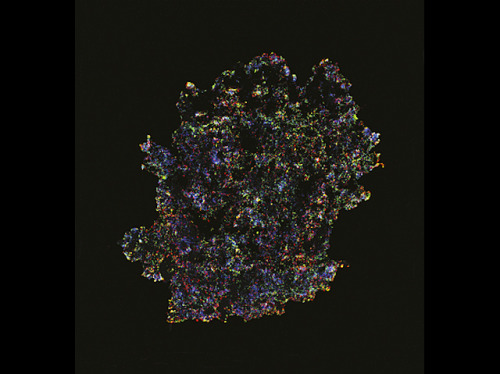
Clever Cultures
Three-dimensional cell cultures, more closely mimicking the cells’ natural environment, are increasingly used for better drug testing, and could also help repair damaged tissues. To this end, researchers developed a technique to culture human neural stem cells (hNSCs) on a scaffold of self-assembling peptides, artificial proteins which self-organise into 3D structures. Unlike other methods, this approach does not involve animal tissues, making it more suitable for human patients. Initial tests in rats with spinal cord injuries suggest that transplants with these cultures can boost recovery of neural tissues: hNSCs successfully implanted and differentiated into various neural cell types, and the rats’ mobility improved. Transplanted hNSCs performed even better when they were cultured for six weeks and encouraged to start differentiating before transplantation (as pictured, with cell nuclei in blue, neurons in green and supportive astrocytes in red), yielding new insights into how stem cell transplants can be made more effective.
Written by Emmanuelle Briolat
- Image by Amanda Marchini, Andrea Raspa, Marina Abd El Malek, and Fabrizio Gelain on the cover of PNAS, April 9, 2019
- Unità Ingegneria Tissutale, Fondazione Istituto di Ricovero e Cura a Carattere Scientifico Casa Sollievo della Sofferenza, Foggia, Italy
- Image copyright held by original authors; image reproduction permitted by PNAS
- Published in PNAS, April 2019
You can also follow BPoD on Instagram, Twitter and Facebook
Archive link



Комментариев нет:
Отправить комментарий